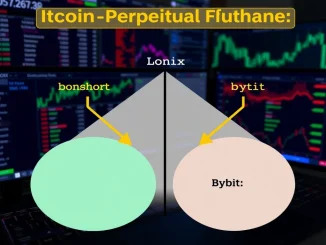
The cryptocurrency market just saw a significant event: a crypto futures liquidation worth hundreds of millions of dollars in a very short period. This kind of sudden movement captures the attention of every trader, from beginners to veterans, highlighting the inherent risks in the fast-paced world of digital assets.
What Happened During This Massive Crypto Futures Liquidation?
In a dramatic turn of events, major cryptocurrency exchanges reported a staggering $342 million worth of futures positions being liquidated in just the past hour. Expanding the view, the total liquidations over the last 24 hours reached an eye-watering $722 million.
But what exactly does ‘liquidation’ mean in the context of crypto futures?
- Leveraged Trading: Futures trading often involves leverage, meaning traders borrow funds to open positions larger than their initial capital.
- Margin Call: If the market moves against a leveraged position, the trader’s margin (collateral) might fall below a certain threshold.
- Forced Closure: When the margin is insufficient to cover potential losses, the exchange automatically closes the position to prevent further debt – this is liquidation.
This recent event indicates a sharp price swing that caught many leveraged traders off guard, forcing the closure of their positions.
Why Does Market Volatility Lead to Bitcoin Liquidation and Other Altcoins?
Cryptocurrency markets are known for their market volatility. Prices can move significantly up or down in a matter of minutes or hours. While this volatility offers opportunities for profit, it also dramatically increases the risk for those using leveraged trading.
When prices drop sharply, long positions (bets that the price will go up) are particularly vulnerable to liquidation. Conversely, a rapid price surge can liquidate short positions (bets that the price will go down).
Given Bitcoin’s dominance, Bitcoin liquidation often accounts for a significant portion of the total liquidation volume during volatile periods. However, large movements also impact Ethereum and various altcoin futures markets, contributing to the overall total.
What Are the Implications of This Crypto Market Crash Event?
While not a full-blown crypto market crash, an event of this liquidation magnitude has several implications:
- Increased Selling Pressure: Forced selling from liquidations can exacerbate price drops, creating a cascading effect.
- Risk Highlighted: It serves as a stark reminder of the dangers of high leverage, especially for inexperienced traders.
- Market Sentiment: Large liquidation events can negatively impact market sentiment, potentially leading to further caution or selling.
- Opportunity for Some: For traders not using leverage or those with sufficient margin, sharp dips can present buying opportunities.
Understanding these dynamics is crucial for navigating the crypto landscape safely.
How Can Traders Navigate High Volatility and Avoid Liquidation?
Navigating markets prone to market volatility requires careful strategy:
- Manage Leverage: Use leverage cautiously, or avoid it altogether, especially if you are new to trading. Lower leverage means your position can withstand larger price swings.
- Use Stop-Loss Orders: Implement stop-loss orders to automatically close your position if the price hits a certain point, limiting potential losses before liquidation occurs.
- Maintain Sufficient Margin: Ensure you have enough collateral in your futures account to cover potential losses from price movements.
- Stay Informed: Keep track of market news, technical indicators, and overall sentiment.
These practices can help protect your capital during periods of intense crypto futures liquidation activity.
Summary: The Cost of Leverage in a Volatile Market
The past 24 hours have shown just how quickly fortunes can change in the crypto futures market. The massive $342 million crypto futures liquidation in a single hour, contributing to over $722 million in total liquidations, underscores the significant risks associated with leveraged trading during periods of high market volatility. While events like significant Bitcoin liquidation might seem daunting, they are a natural, albeit painful, part of a leveraged market. For traders, this serves as a critical lesson in risk management, emphasizing the importance of position sizing, leverage control, and setting stop losses to survive and potentially thrive in this dynamic environment. Avoiding being caught in the next potential crypto market crash or sharp downturn requires discipline and a deep respect for market forces.



